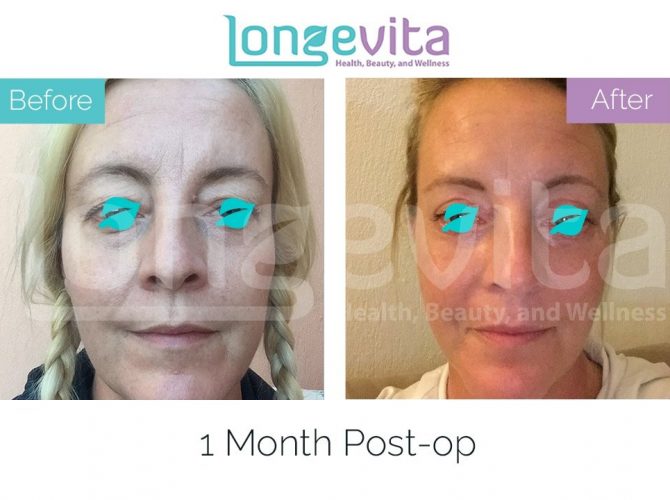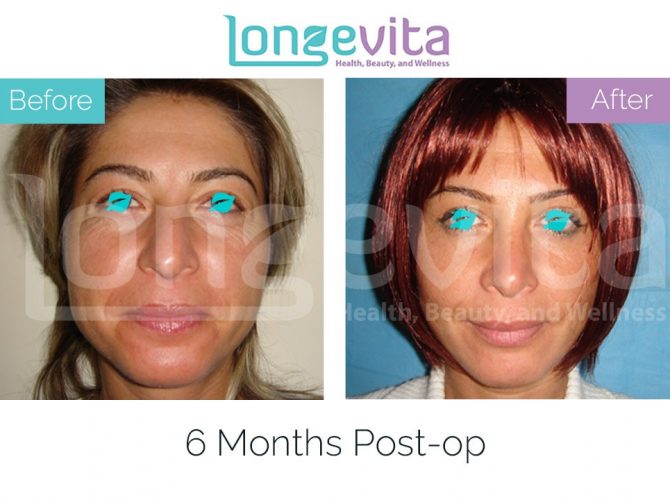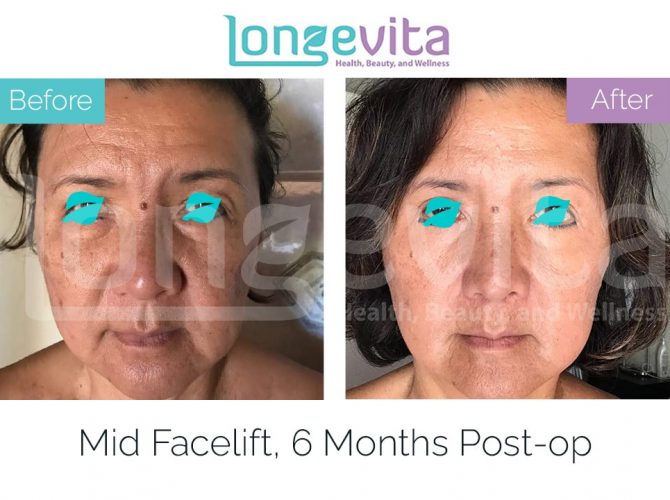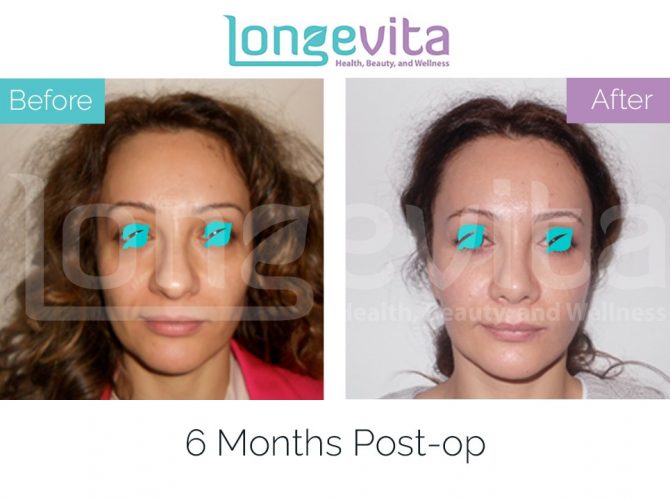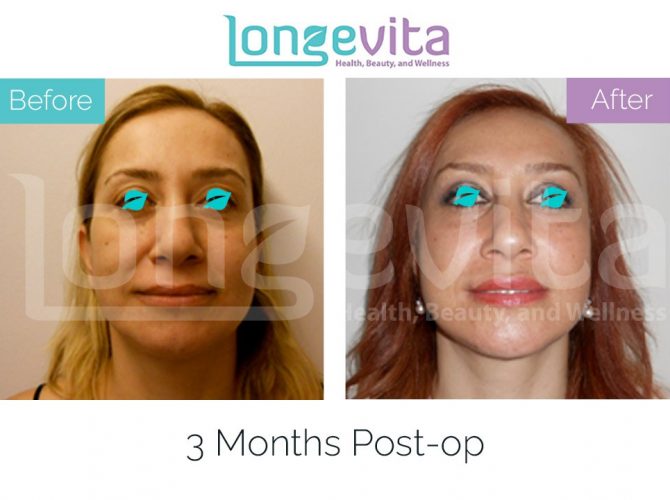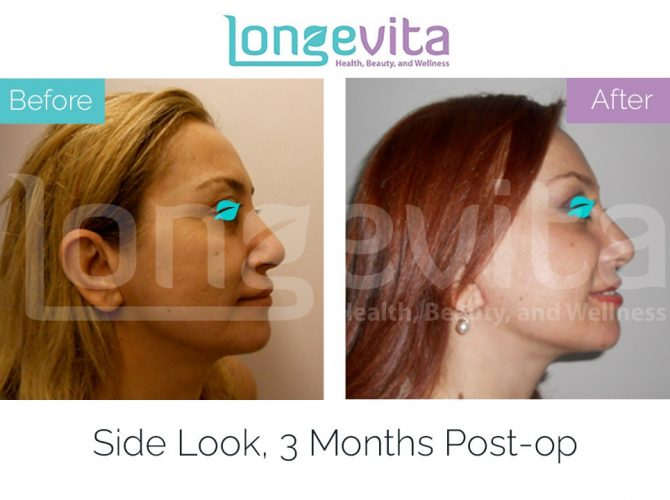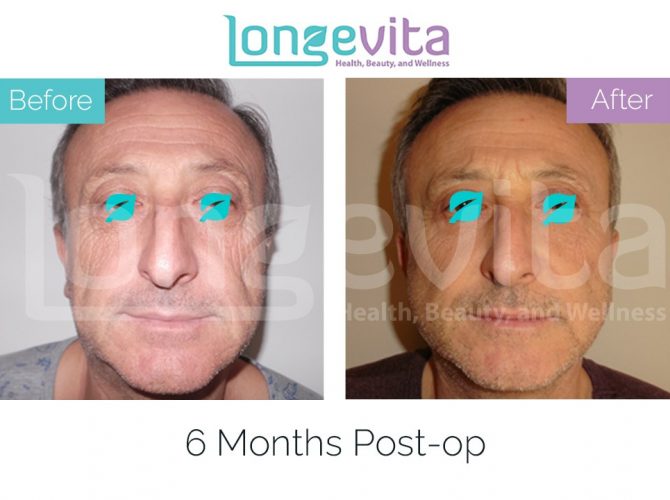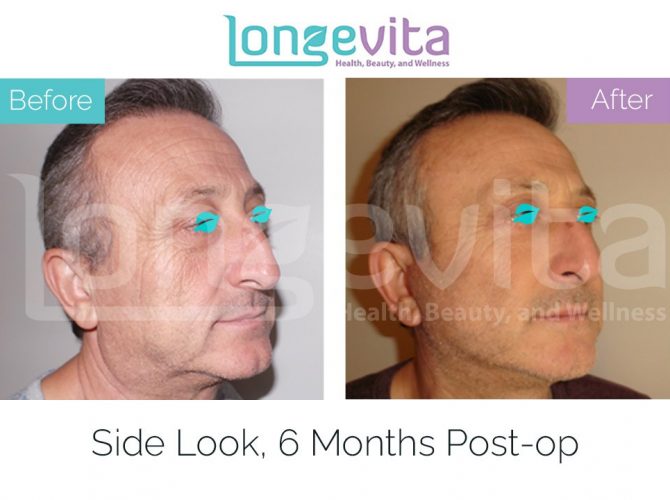Looking into the mirror, many men and women feel like they look older than they actually are.
The drooping bags of skin and fat, loss of muscle tone and loss of elasticity can all make you feel less confident about yourself.
But a facelift can fix these issues and give you a more youthful appearance.
What Is A Facelift?
In a rhytidectomy or facelift procedure, the surgeon repositions/removes excess skin and fat and tightens the muscles in the lower half of the face (cheeks, neck and jowls).
Surgical incisions are made along the hairline to lift the entire facial skin upwards and backwards.
This surgery can smooth out wrinkles and folds, giving you a more youthful appearance.
It’s important to note that if you have a droopy forehead, eyebrows, or eyelids, you’d need other cosmetic surgeries (brow lift/forehead lift and eyelid surgery), as facelift surgery does not address those issues.
In addition, the surgery does not change the bone structure or skin quality. It will also not get rid of any age spots or melasma.
What Is The Cost Of a Facelift In Turkey?
In Turkey, you can get a facelift starting from £2,000. In the UK, however, the same surgery can cost £15,000 or even more.
Since facelift is cosmetic surgery, it is not available on the NHS, and the cost of this surgery in private clinics can vary by location, surgical technique, size of the treatment area, anaesthesia, and the qualifications of the surgeon.
But because the cost of a facelift in Turkey is 3-5 times less than in the UK, many people choose to become medical tourists. Mainly this has been made possible by the currency exchange rate and the low cost of living in Turkey.
Owing to these factors, Turkey has become a hub of cosmetic surgery. According to a survey by the International Society of Aesthetic Plastic Surgery (ISAPS), almost 10,000 people had this surgical procedure in Turkey in 2020 alone. And this is because of the affordable facelift surgery cost.
But it’s also very high quality. The Turkish Ministry of Health regulates medical tourism to ensure the provision of safe and quality healthcare.
Who Can Have Facelift & Why?
You are a good candidate for facelift surgery if:
- Your facial skin is sagging below the lower eyelids, around the nose and the mouth, chin, and jawline.
- You have jowls from the displacement of fat pads and loss of skin elasticity.
- You are in good health, do not smoke, and have realistic expectations from the surgery.
- You do not have a wound-healing disorder, cardiac disease, and/or diabetes.
If you’re pregnant, you aren’t recommended a facelift. General anaesthesia can cause serious health complications in pregnant women.
Therefore, it is better if you wait to get this surgery at least 6 months after birth.
Am I Suitable For Facelift?
What To Think About Before You Have a Facelift In Turkey?
When deciding on a clinic for your facelift surgery, it is important that you ask the right questions to make the right decision.
You should begin by asking if the medical facility is registered with a regulatory body.
Also, ask about the registration, licensing, and memberships (if any) of your surgeon. And as a follow-up, ask how many facelifts the surgeon has performed and for how long.
It’s also important to learn about the expected surgical outcome from the surgery and the location of the incisions.
Be sure to understand how the scars from the procedure heal and what the risks and complications are.
You should also consider asking the clinic if it’s possible for you to meet a previous patient of the surgeon who had a facelift in Turkey.
Lastly, enquire about the follow-up you can expect after the surgery.
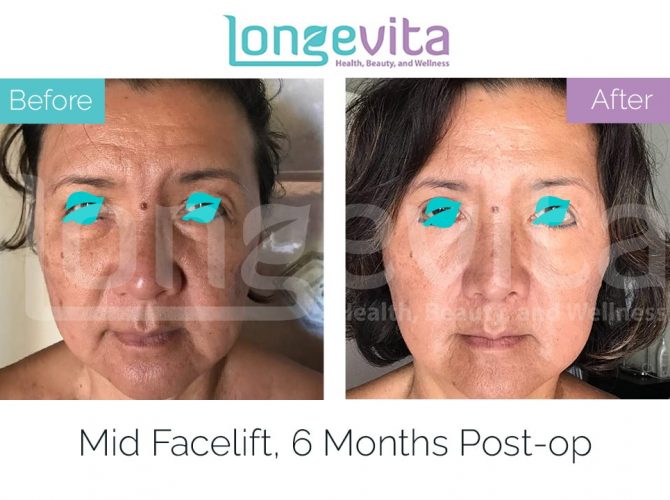
How Best To Prepare For a Facelift?
Before getting facelift surgery in Turkey, you need to prepare yourself in a few ways.
First, discontinue blood thinners, non-steroidal anti-inflammatory drugs (NSAIDs), and vitamin/herbal supplements before the plastic surgery operation.
All of these can make you bleed more during the surgery and delay healing afterwards.
Since smoking, chewing tobacco, drinking alcohol or doing recreational drugs can cause the same, you need to avoid them as well 1 week before the surgery.
On the night of the surgery, make sure to take a bath to clean the surgical areas. And on the day of, remove any facial piercing or jewellery items.
Also, do not apply any serums, moisturizers, or makeup to your face or hair.
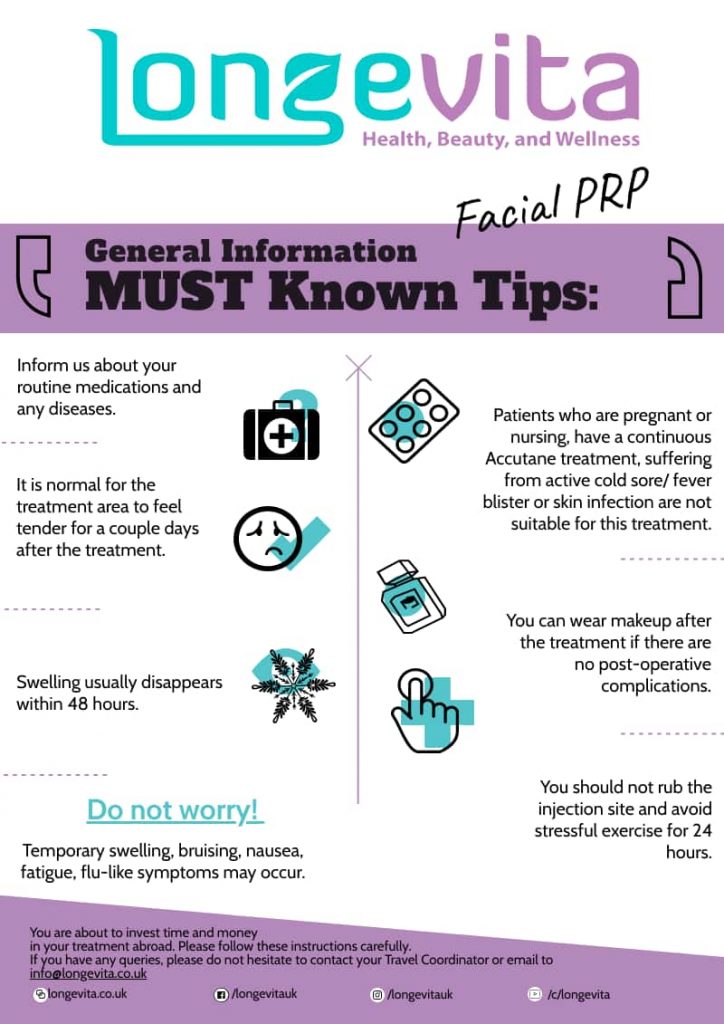
What Is The Procedure For A Facelift In Turkey?

First, the surgeon will perform a physical exam to check your facial anatomy and determine the extent of sagging. After that, the surgical areas will be marked.
You’ll be given general anaesthesia by an anaesthetist. In some cases, the surgery’s also done under local anaesthesia with sedation.
In any case, the surgeon will make the incisions to lift the skin. Then they will tighten the underlying muscles and remove (or reposition) the excess fat, and eliminate sagging skin.
After that, the wounds are sutured, and the surgeon will place a dressing on them. You might also have surgical drains around the ears to speed up the healing process.
The total surgical time is 2-3 hours. However, it can take longer if you’re getting other cosmetic surgeries.
The surgical technique that the surgeon recommends depends on your aesthetic goals. There are two types of facelifts.
Mini Facelift
This surgery eliminates sagging skin on the lower half of the face from the cheeks to the jawline. It’s best suited for patients whose primary concern is marionette lines. The surgeon makes incisions in front of the ears.
Afterwards, they gently pull the tissues upward and outward to get rid of the excess and tighten the appearance of the skin.
A mini facelift can involve the redistribution of fat to areas that have lost volume or the removal of fat from the jowls and tightening of the facial muscles.
Full Facelift
In a full facelift, excess skin is removed, and the underlying facial muscles are tightened. It includes the lower half of the face and the neck region.
The surgeon begins by making incisions at the temples along the hairline, around the front of the ears, and then goes behind them towards the lower scalp.
These are made on both sides of the face. Incisions might also be made under the chin if the jawline is to be lifted.
This surgery is more invasive and suitable for people who have extensive sagging and require significant tissue adjustment.

Comparison Table
Following is an overview of the differences between the two facelifts. It can give you an idea of the surgery that’ll best suit your needs.
| Mini Facelift | Full Facelift | |
| Surgery Aim | Remove excess skin | Remove excess skin and tighten facial muscles |
| Concerned Areas | Mainly cheeks | Cheeks, jawline and the neck region |
| Incisions | In front of the ears | In front of and behind the ears |
| Suitability | Mild to moderate sagging | Severe skin sagging |
Book A Free Consultation With Our Patient Consultants
We offer free consultations for patients across the UK & Ireland, so you can discuss your individual requirements with our specialists. Book A Free Consultation With Our Patient Consultants Today.
Recovery & Results Of Facelift
The surgery is usually inpatient, so you’ll have to spend the night at the hospital.
When you leave the facility after this surgery, it’s better if you have someone accompany you. You may have pain, redness, and bruising.
Make sure to take your painkillers, antibiotics, and anti-inflammatory medicines. Do not shower for at least 48 hours after the surgery.
You can start eating and drinking around 4 hours after, although your face may feel a little tight.
Make sure that when you’re lying down, your head is propped up against a pillow to reduce swelling. It is possible for the swelling to travel down the face to the neck.
Due to the swelling, you may have to wait for at least 6-9 months to see the results of the surgery. But the recovery time can vary between individuals. It can even take a year.
Keep in mind that a facelift will not stop ageing. The effects of gravity and loss of skin elasticity due to the underproduction of collagen will stay with you.
The results of the surgery may be permanent, or you might end up needing more than one treatment. Your lifestyle, genetics, and diet can affect the longevity of the results.
Aftercare Of Facelift
To keep the surgical area dry, clean and healing normally, you need to avoid vigorous physical activity. You should also avoid bending down.
It’s crucial to avoid any sexual activities for at least a month after the surgery.
You should also not go to a swimming pool, saunas or hot baths for a few weeks after the surgery.
Avoid direct, prolonged exposure to sunlight. And when you do go out, make sure to wear sunscreen (start doing so after the incisions are healed).
You have to wait for 1-2 weeks before starting to apply makeup or moisturizers on the face. Before you do that, consult the surgeon.
It’s better if you take two to four weeks off work to rest and allow your body to heal.
Side Effects to Expect After Facelift
You may experience the following side effects after a facelift surgery:
- Stiffness and Swelling: The tightening of the muscles and the repositioning of the skin might make your face feel a bit stiff.
You may feel tightness on opening your mouth. Other than that, you may experience swelling around the cheeks, jaw, chin, and neck.
This is usually accompanied by inflammation. You can use cold compresses to reduce swelling while keeping the head elevated.
These side effects can take a few weeks to a few months to go away.
- Bruising: Soon after the surgery, you may have visible bruising in the surgical areas.
It should start fading after 2 weeks. But you may continue to experience it for up to 9 months.
- Scarring: Incisions result in scarring. However, their colour will change from red to purple as it continues to fade over 1-2 years.
It is quite likely that the scars won’t completely go away. In addition, you may have raised skin around the temples and the hairline.
What Could Go Wrong After Facelift?
Facelift is considered a safe surgery, and the recovery process can proceed normally if you follow the surgeon’s instructions.
Failure to do so or because of some other reasons, the following surgical complications can arise:
- Infection: This can affect the results of the surgery, so make sure that you take your antibiotics, don’t smoke, and avoid activities that make you sweat.
- Asymmetry: It is possible that the skin tightening and the removal of loose skin leave the two sides of the face asymmetrical.
The effect can be exacerbated by the raised scars around the incision site. It can settle with time.
- Hair Loss: You can end up losing hair around the areas where the surgeon makes incisions for the facelift. It may be permanent.
- Blood Clotting: There’s a risk of the formation of blood clots in the deep vein. This blood clot can also travel to the lungs and get lodged there.
What To Do If You Have Problems After Facelift In Turkey?
If you’re experiencing any problems after a facelift in Turkey, get in touch with the Aftercare team online for a free consultation.
You can also learn more about the recovery through the post-op guides available on our website.
Alternatives To Facelift Surgery
Botox injections can also help smooth out wrinkles and fine lines on your face. However, it’s best for minor aesthetic problems.
It won’t deliver dramatic or satisfactory results if you have excessively drooping skin around the face and a sagging neck.
Other than that, plastic surgeons can also recommend a fat grafting procedure to fill in the sunken areas of the face. But that alone might not address all your problems.
Other Procedures to Have with Facelift
When getting a facelift, it is common for patients to get an eyebrow lift and eyelid surgery to get rid of flabby skin around the face.
Most commonly, patients combine a neck lift surgery with a facelift for a more dramatic transformation.
You can also get breast surgery and liposuction when getting a facelift.
| Botox | Facelift | |
| Procedure | Injection of Botulinum toxin into muscles | Removal of excess skin and fat and tightening of facial muscles |
| Aim | Smoothen out wrinkles and fine lines | Gets rid of sagging skin and wrinkles |
| Treatment Time | 10-15 minutes | 2-3 hours |
| Frequency of Treatment | After every 6 months (has side effects in case of long-term use) | One-time |
| Downtime | None | 2-4 weeks |
| Overall Results | Temporary Prevents further deepening of mild-to-moderate wrinkles and fine lines. | Permanent More dramatic with visible change immediately after the surgery. |
FAQ
Can I see the before/after photos of patients who had a facelift in Turkey?
You can check out the before/after photos of patients in the gallery on our website. You can also ask for the patient portfolio of the surgeon performing your facelift.
Will my face look “pulled” after facelift surgery?
Your face will not appear pulled or tight after a facelift when done by an experienced surgeon. It should look very natural.
Can I get facelift surgery on sun-damaged skin?
Some of the fine lines and wrinkles resulting from sun damage cannot be treated by a facelift.
To achieve the best results, it’s better to get a laser resurfacing treatment before the surgery (but consult a doctor about this first). This way, you’ll see a noticeable change in your appearance.
When can I go back to the UK after my facelift surgery?
You can go back to the UK 6-7 days after being discharged. You’ll just have to come in for one check-up appointment to remove the dressing/stitches.
Reviewed and Approved by Prof Fuat Yuksel
